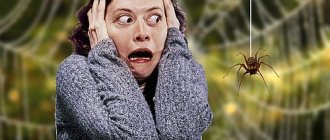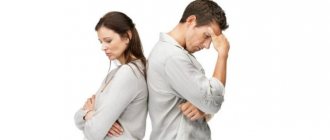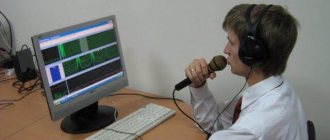Although civil aviation has seen a sharp decline in passenger traffic over the past year and a half due to the pandemic, air travel continues to be one of the most popular means of long-distance travel.
Today, flying has become a fairly everyday event, but some people continue to experience great fear of it and are ready to endure any inconvenience in order not to board an aircraft.
Since aerophobia can be a real problem, it is important to understand how to get rid of it - on your own or with the help of professionals. This is exactly what we will talk about today.
German psychiatrist: Not being afraid of terrorist attacks is the best weapon against terrorism
A researcher on the psychology of fear told DW in an interview how rational it is to be afraid to appear in crowded places after the terrorist attacks in Brussels.
(03/23/2016) But, according to experts, Germans between the ages of 30 and 40 are more likely to suffer from stress and are more interested in getting rid of the obsessive state of aerophobia. After all, people like this often have to go on business trips.
Some airlines are sympathetic to passengers' aerophobia. Lufthansa, for example, does not charge a refund fee for purchased tickets if the passenger suddenly begins to panic on the eve of the flight. However, this rule only applies if you have a doctor’s certificate. Well, what if you don’t want to or feel awkward approaching him? For those who want to get rid of pre-flight fear themselves, experts at the Center for Combating Aerophobia have prepared 10 tips:
Start without stress
Minimize stress before your flight. If possible, complete online check-in the day before, print out your boarding passes at home, and take a taxi or express train to the airport. Try to do without luggage: with hand luggage you won’t have to arrive early and stand in long lines. Get enough sleep and rest before your flight.
Choose your seat
The most comfortable seats in the aircraft cabin are in the front part and at the wings. There, passengers feel less shaking and spinning. On the official websites of airlines there are aircraft layout diagrams, from which you can find out where the most comfortable seats are located. For example, if you are flying on an Airbus A320, rows 8-15 are better, on a Boeing 737-800 - from 12 to 18. And do not sit in the rear part of the cabin: it is quite possible that you will get motion sickness there.
Dress comfortably
Tight ties and buttoned collars are not compatible with long flights. The same goes for narrow bracelets, rings and watches. Choose comfortable clothes and shoes, and take an inflatable neck pillow.
Trust the professionals
Don't be afraid to tell the flight attendants about your fears. If possible, meet the pilot. When boarding the plane, tell the flight attendants about this, perhaps they will allow you to enter the cockpit at least for a few minutes. According to psychologists, during this time you will have time to get an idea of the aircraft commander and make sure of his professionalism.
Have fun and relax
During long flights, you will be offered to watch movies or listen to music on board. But it’s better to take care of the entertainment yourself: make a playlist with your favorite songs, take an interesting book or a tablet with games. Experts consider audiobooks to be the ideal option.
More fluid
Try to drink as much still water or juice as possible, as the air in the cabin is very dry. A glass of champagne to celebrate the start of your long-awaited vacation won't hurt either. Just don’t think of alcohol as a means to combat fear. There is no need to overdo it with strong drinks on the plane either.
Don't stay too long
Who said you have to sit all the time on an airplane? Walk around the salon, rise on your toes, bend several times in different directions. Such exercises will help restore blood circulation. If you are embarrassed to warm up in front of other passengers, rotate your feet and hands while sitting in your seat, straighten your back and straighten your shoulders.
Find someone to talk to
If panic still begins to overcome you, try to start a conversation with the flight attendant or with the passenger sitting in the next seat. It is better to directly communicate that you have a fear of flying and find it difficult to overcome it. Perhaps a new acquaintance (or acquaintance) will tell you something interesting and distract you from frightening fantasies.
Forget about medications
It is better to avoid taking strong anti-stress medications during a flight. These medications may work differently at altitude than on the ground. Remember: fear of flying is not a disease that needs to be treated with medication. Psychologists advise paying attention to homeopathic remedies that are not addictive and are sold without a prescription at any pharmacy.
Learn materiel
If all the above tips don’t help, then you need to figure out later, on Earth, how airplanes actually fly. You can watch documentaries or go to a special center with flight simulators. After such training during a flight, you will no longer be disturbed by strange sounds on takeoff. You will learn that bouncing around in turbulence and going around on landing are normal situations that do not put your life in danger.
Have a good flight!
See also:
The future of passenger aircraft
Why are people afraid to fly?
Before we move on to discussing how to stop being afraid of flying, let's try to understand where this fear comes from. Over the past hundred years, people's attitudes towards air travel have changed dramatically. Air travel has evolved from a fantasy to a common and widely used mode of transportation.
According to the International Air Transport Association (IATA), before the pandemic, more than 100,000 flights took place around the world every day - so in March 2021, the average number of flights per day was 145 thousand, before their number decreased significantly due to border closures.
In recent years, air travel has increased not only in frequency, but also in overall safety. Thus, according to statistics in civil aviation, for every 4-5 million flights there is only one fatal accident. Over the past year, 2021, 299 people died on commercial flights - for comparison, in Russia alone, from 15 to 20 thousand people die annually in car accidents.
With such telling data, it's no surprise that, according to a report published in the journal Research in Transportation Economics, air travel is safer in terms of fatalities than any other mode of transportation, including:
- cars;
- ferries;
- metro;
- trains;
- buses.
However, there are moments that make even an experienced traveler a little nervous. For example, when the wheels of an airplane begin to roll along the asphalt at impressive speeds, or you encounter severe turbulence, it is not uncommon to have to tighten your grip on the armrests.
It is normal to feel confused or unsure while flying. The good news is that if the anxiety doesn't last long and goes away once the scary situation ends, you probably don't have an ongoing fear of flying, known as aerophobia. We will tell you how it manifests itself in the next paragraph.
Expanding the boundaries
The new wide-body Airbus A330neo features improved engines that reduce fuel consumption by 14% and emissions by 10%. The innovative LED lighting system allows you to paint the aircraft interior in any color: the palette includes 16 million shades. The vessel is designed for 252 or 310 passengers, depending on the layout. The A330neo should begin operations in 2017.
The future of passenger aircraft
What Causes Fear of Flying: 4 Possible Factors
There are several factors that can increase your fear of flying. It can be caused by one specific cause or a combination of a number of factors.
Thus, aerophobia can develop after a bad flight experience, or when meeting someone who has experienced a traumatic flight incident or aviation event.
Feelings of loss of control are a common trigger for anxiety and a fairly common factor in aerophobia. Knowing that you can't influence the situation or leave the salon whenever you want can be scary for some people.
- Lifestyle Panic attack: symptoms and ways to cope with an attack of severe fear Definition of panic attacks, risk factors and treatment methods.
Claustrophobia is another condition that can trigger aerophobia. An airplane cabin is a confined, crowded space, and it can feel especially cramped during boarding when emotions are already running high.
And finally, fear of heights (acrophobia) when at an altitude of 9-12 kilometers above the ground begins to manifest itself in its worst form.
Crystal clear
According to the creators of Fresh Lavatory, this restroom is capable of cleaning itself: after a passenger leaves it, ultraviolet lamps disinfect the cabin, and water automatically washes the sink. The air toilet is equipped with sensors, which allows you to avoid touching the tap and other buttons. No germs!
The future of passenger aircraft
Pathogenesis
Immediately before and during a flight, people with aerophobia arrive in a state of constant tension. Because of this, their breathing quickens, their heart rate increases, and their anxiety increases.
The psychological basis of this state is the fear of death . However, if with a real threat to life the fear of death is a natural instinct, then with aerophobia such fear is unfounded. Therefore, such a phobia is a disorder that requires treatment.
Like in the movies
Now you don’t have to take a laptop or tablet with you on a plane: soon the developers promise to introduce new entertainment systems on board. The diagonal of the touch screen in the back of the chair in front will reach 26 inches, and movies or TV series can be watched on this built-in TV from your own USB flash drive.
The future of passenger aircraft
During turbulence
Many passengers do not endure the flight itself so much as the turbulence. Although, when you are driving a car and the road gets rough, you don’t start worrying about getting into a fatal accident.
You try to double your vigilance. It's the same with an airplane. He simply ends up in air pockets that he couldn’t get around. The plane itself will not fly into the area of thunderclouds, but will try to miss it.
The aircraft is not afraid of turbulence due to its perfect design.
Any aircraft is thoroughly tested before it is sent into service, so that it can withstand very heavy loads. What can we say about some thunderclouds or wind?
Sometimes the turbulence can be very strong. In this case, things fall from the shelves above, and the plane can even shake. This is no reason to panic!
Meat or fish?
Let's be back for lunch. All in-flight food is prepared on Earth, then it is cooled and heated on the plane. It is not surprising that after this the food is not always to the taste of the passengers. To keep airline customers happy with their meals, new technologies emerge every year, such as sous-vide cooking in a sealed bag and the first induction cooktops for airplanes.
The future of passenger aircraft
Main symptoms
The most common symptoms that people with fear of flying notice in themselves:
- The heartbeat quickens at the mere thought of the upcoming journey by air. Some people’s hearts skip a beat, even if the flight is only in a month;
- the desire to use the usual sedative, alcohol, smoke a cigarette, or use other attempts to calm down;
- dizziness accompanying tachycardia. Particularly impressionable people may even faint;
- due to the fear of flying, sweating increases: wet palms and armpits are faithful companions of those who are familiar with aerophobia;
- the body is in constant tension: endless audio (and if the window allows, then visual) control of the engine, convulsive reactions to any shaking, inability to sleep or simply switch attention;
- suspicion towards the crew: attempts to hear alcohol intoxication in the pilot’s voice, to read the terrible thoughts of the flight attendant, which she allegedly hides behind a smile;
- the turbulence zone, when the liner begins to shake, causes uncontrollable manifestations of phobia and the most terrible thoughts of death.
UNJUSTIFIED STEREOTYPES
If a person has no manifestations of the disease, but fear is present, then perhaps it’s all a matter of excessive suspiciousness. There is no need to invent reasons for the disaster and go through all the familiar misfortunes in your mind. Today you can often encounter unreliable information that deliberately exaggerates the scale of the tragedy. Anxious sentiments are fueled by a number of far-fetched stereotypes:
• Old planes are dangerous
For aircraft, the service life is not strictly defined. It was originally designed for long service. If the aircraft fails for any reason, it is classified as “faulty” and will no longer fly.
• Security can only be provided by large companies
All aircraft undergo strict and thorough checks before each flight. The level of verification does not depend on the name and size of the company.
• Suddenly the porthole breaks
It is impossible to break the porthole. Airplane glass is very durable and multi-layered. In addition, the pressure difference between atmospheric air and the pressure in the cabin will prevent the glass from breaking.
• What if a bird gets into the engine!
Even if this happens and the engine fails, the work will be duplicated by other engines. If the entire flock of birds flies into all the engines at once, the plane will simply glide gently to the ground.
Classification
Experts divide aerophobia into two periods:
- Pre is the period before a flight when a few days or hours before a flight a person develops nervousness. In this case, the patient can be either aggressive and irritable, or withdrawn and depressed. Immediately before the flight, he can do everything to ultimately avoid boarding the plane.
- The period in flight - after boarding the aircraft, a number of characteristic symptoms develop: heart rate and pressure increase, tremors , sweating , and gastrointestinal dysfunction are noted. A person “increases” his condition by analyzing the flight and the actions of the crew, imagining disasters. Moreover, any deviations from the norm during the flight can provoke a panic attack .
Treatment with folk remedies
To reduce anxiety levels, you can use some folk remedies. However, they can only be effective with long-term and regular use.
- Valerian decoction . 2 tbsp. l. valerian root pour 400 ml of water and keep in a water bath for about 40 minutes. Infuse, strain and drink 50 ml every 3 hours.
- Motherwort decoction . 3 tbsp. l. motherwort herbs pour 1 liter of water and simmer in a water bath for 20 minutes. Strain, drink half a glass 5 times a day. You can add 20 g of hawthorn berries to the motherwort herb.
- Ginger tea . Pour boiling water over 20 g of ginger and leave. Drink 2 times a day, adding honey.
Signs of aerophobia
It should be understood that aerophobia is not an independent disease. It is rather a psycho-emotional disorder caused by the above reasons. Signs of this condition can be psychological and physical.
Psychological symptoms include:
- a feeling of anxiety that grips a person on the day of the flight or long before it;
- obsessive desire to study information about plane crashes;
- excessive dramatization of the situation, focusing on certain details that seem suspicious and dangerous;
- panic attacks that begin upon arrival at the airport.
Physical signs include:
- dizziness;
- excessive sweating;
- rapid pulse;
- dyspnea;
- a sharp jump in blood pressure;
- disorders of the gastrointestinal tract (diarrhea, vomiting);
- tension in muscles and joints;
- weakness;
- loss of consciousness.
Diet
Diet for the nervous system
- Efficacy: therapeutic effect after 2 months
- Timing: constantly
- Cost of food: 1700-1800 rubles per week
Before the flight, it is recommended to eat lightly, since problems with the vestibular system are more likely to appear on an empty stomach. It is recommended to eat light, familiar food, without overusing fried and fatty foods.
It is better to drink herbal or green tea. You should avoid coffee and alcohol, as these drinks increase your heart rate.
Causes
A person with aerophobia tells himself “I’m afraid to fly” for certain reasons. The development of this condition is provoked by both external and internal factors.
External factors contributing to the development of such a phobia are:
- Lack of delivery information on flight safety.
- The influence on people of images of plane crashes seen in the news.
- My own experience of a “difficult” flight, when technical difficulties arise, bad weather conditions are observed, etc.
- Impressions from stories from relatives or friends about problems in flights.
Internal factors that increase the likelihood of developing such a phobia are:
- Physical and mental exhaustion or overwork.
- Somatic diseases: cardiovascular diseases, increased susceptibility to sudden changes in pressure.
- Depressive state, neuroses , reducing resistance to stress.
Help from specialists
For some people, aerophobia is so deeply rooted that relief comes only after a psychotherapeutic session. In the most severe cases, the course of treatment for this phobia is 3–10 sessions.
Treatment regimen for phobia
Modern psychotherapists argue that treatment of aerophobia will be successful only if it is built according to a clear pattern. Fear of heights usually consists of the following disorders:
- Aerophobia.
- Claustrophobia.
- The need to exercise control over the situation.
- Panic attacks.
- Obsessive-compulsive disorder (OCD).
Treatment of aerophobia, when the disease is at an initial stage, involves the timely elimination of concomitant pathologies. Unfortunately, some mental disorders, such as OCD, can only be suppressed temporarily.
The second stage of treatment for this phobia is “educational education”. A person suffering from aerophobia will learn interesting details about aviation, safety systems and aerodynamics. The main task of the specialist is to teach the patient to control his emotions - the physiology of fear, and not to control what he a priori cannot control.
At the third stage of treatment, a person suffering from aerophobia is asked to take a virtual flight in a special room.
Medicines are used in the treatment of this phobia, but do not play a major role. If the situation requires it, the specialist may prescribe the patient to take beta blockers and antidepressants.
If the treatment was timely and correct, then recovery occurs in 85–90 percent of cases. Some doctors are confident that if aerophobia is not accompanied by severe mental disorders, then overcoming fear occurs in 100 percent of cases.
New treatment methods
For some people wondering how to get rid of aerophobia, only hardware treatment can help. The treatment process is carried out in a full-time course format. Classes can be either individual or group. The range of therapeutic measures that allow you to say goodbye to aerophobia forever is quite extensive. People suffering from aerophobia are offered:
- theoretical studies;
- practical lessons;
- training on special simulators;
- implementation of virtual flights.
In addition to the general course, people suffering from aerophobia are given a separate opportunity to “take a flight” on two flight simulators.
The first simulator is presented in the form of a modern 3D stimulator. With the help of this device, a person suffering from aerophobia will be able to better understand the principles of behavior of air transport during the flight. In essence, a person learns to independently operate an aircraft and control the flight. After this, the symptoms of the phobia usually disappear.
One of the rooms for working on a virtual reality simulator
The second flight simulator is a special complex. This complex effectively uses modern virtual reality technologies. Once in the office of a unique simulator, a person will be able to try on the responsibility of a pilot. In this case, the operator creates a variety of conditions.
After such activities, a person can usually better assess the current situation. Hardware treatment also has a significant disadvantage - high cost. It is also believed that such training is more suitable not for “mere mortals”, but for civilian and military pilots suffering from aerophobia.
For those who cannot attend face-to-face classes, an alternative is provided in the form of an interactive video course. With the help of this video course, a person will learn everything about the work of a pilot and the functioning of air transport.
Treatment of aerophobia requires an individual approach. The success of treating aerophobia depends on how correctly the root cause of fear of air transport is identified.











